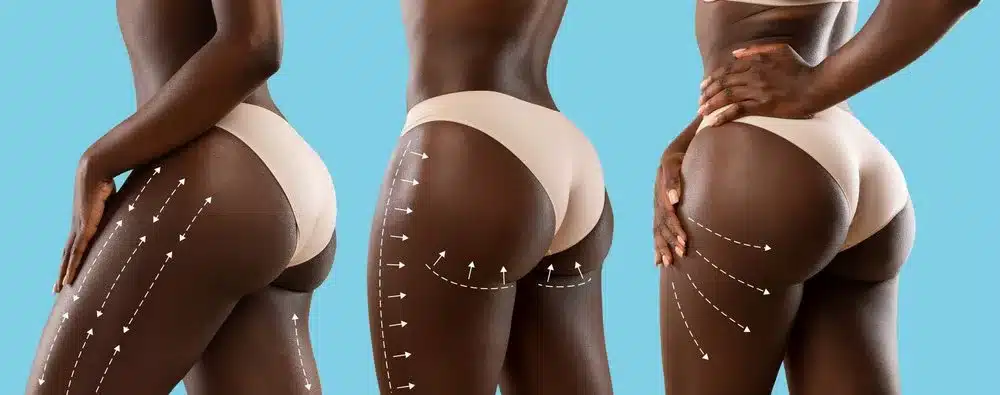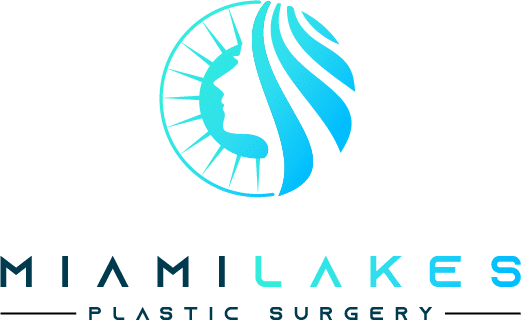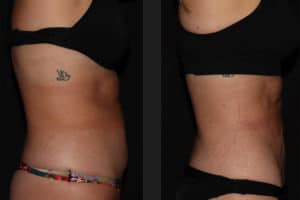The level of pain experienced during the recovery from a Mommy Makeover, often a question on many people’s minds as “How painful is recovery from mommy makeover?”, can vary from person to person. It’s important to remember that pain tolerance and individual responses to surgery can differ.

Immediate Post-Operative Period
The immediate post-operative period following a Mommy Makeover is a critical phase for recovery. Here’s what you can expect during this period:
- Recovery Room: After your Mommy Makeover surgery, you will be taken to a recovery room where you will be closely monitored by medical professionals. They will ensure your vital signs are stable and manage any immediate post-operative discomfort.
- Pain and Discomfort: It is normal to experience pain and discomfort in the first few days following the surgery. Your surgeon will prescribe appropriate pain medication to help manage this discomfort. Take the medication as directed and inform the medical staff if you require additional relief.
- Monitoring and Observation: During the immediate post-operative period, you will be closely monitored for any potential complications or adverse reactions. This may include monitoring your heart rate, blood pressure, and oxygen levels. Medical staff will check your incisions and dressing regularly.
- Nausea and Vomiting: Some individuals may experience nausea or vomiting due to the anesthesia or pain medication. Medications can be administered to alleviate these symptoms and make you more comfortable. Inform the medical staff if you experience any such issues.
- Drains and Dressings: Depending on the procedures performed, you may have drains placed to remove excess fluid or blood from the surgical sites. Your surgeon will provide instructions on how to manage and care for these drains. Dressings may also be applied to protect the incision sites.
- Fluid Intake and Nutrition: Adequate fluid intake is essential for hydration and the healing process. Your medical team will provide instructions on when and what you can consume. It’s important to follow these guidelines to maintain proper hydration and nutrition.
- Early Mobility: While it is crucial to rest and allow your body to heal, early mobility is encouraged to promote blood circulation and prevent complications. Your medical team will provide guidance on when and how to start moving around, including walking short distances.
- Post-Operative Instructions: Your surgeon will provide specific post-operative instructions tailored to your needs. These may include guidelines on wound care, medication management, activity restrictions, and follow-up appointments. It is important to follow these instructions diligently to ensure a successful recovery.
Remember, the immediate post-operative period is a critical time for your recovery. You will receive close monitoring, pain management, and guidance from your medical team. If you have any concerns or questions during this time, do not hesitate to communicate with the medical staff or your surgeon.

Managing Initial Pain and Discomfort
During the initial stages of your Mommy Makeover recovery, you may experience pain and discomfort. Medications can play a crucial role in managing these symptoms. Here are some common types of medications that may be prescribed for pain relief:
| Managing Initial Pain and Discomfort: Medications for Pain Relief |
|---|
| Prescription Pain Medication |
| – Provides effective pain relief |
| – Take as directed by your surgeon |
| Non-Steroidal Anti-Inflammatory Drugs (NSAIDs) |
| – Reduces pain and inflammation |
| – Can be used in combination with prescription pain medication or as an alternative |
| Muscle Relaxants |
| – Eases muscle discomfort and promotes relaxation |
| – Prescribed if muscle tightness or spasms are present |
| Local Anesthetics |
| – Numbs specific areas for temporary pain relief |
| – Administered during surgery or applied topically |
| Anti-Nausea Medication |
| – Alleviates nausea or vomiting caused by anesthesia or pain medication |
| – Prescribed if needed |
Please note that this table provides a concise overview of the common types of medications that may be prescribed for pain relief during the initial stages of Mommy Makeover recovery. Your surgeon will determine the specific medications and dosages based on your individual needs. It’s important to follow their instructions and communicate any concerns or side effects you may experience.
The First Week of Recovery
The first week of recovery after a Mommy Makeover is a critical time for healing and adjusting to the changes in your body. Here’s what you can expect during this initial phase:
- Discomfort and Pain: It’s normal to experience some discomfort and pain during the first week. Your surgeon will prescribe pain medication to help manage this. Take the medication as directed and inform your medical team if you require additional relief.
- Swelling and Bruising: Swelling and bruising are common after a Mommy Makeover. They will be most noticeable during the first week but will gradually subside over time. Using cold compresses and keeping your body elevated can help reduce swelling.
- Limited Mobility: During the first week, you may experience limited mobility, especially if your Mommy Makeover involved procedures such as a tummy tuck or breast surgery. Take it easy and avoid any activities that could strain the surgical areas.
- Compression Garments: Your surgeon may provide you with compression garments to wear during the first week. These garments help minimize swelling, provide support to the healing tissues, and promote optimal contouring. Follow your surgeon’s instructions on when and how to wear them.
- Incision Care: Proper care of your incisions is crucial for optimal healing. Your surgeon will provide specific instructions on how to clean and care for your incisions. Follow these instructions diligently to reduce the risk of infection and promote proper healing.
- Rest and Recovery: Adequate rest is essential for the healing process. Take time to relax and avoid strenuous activities. Follow your surgeon’s guidelines on when you can resume light activities and work.
- Diet and Hydration: Maintain a healthy diet and stay hydrated during your recovery. Proper nutrition and hydration support the healing process. Follow any dietary restrictions provided by your surgeon.
- Follow-up Appointments: Attend any scheduled follow-up appointments with your surgeon. These appointments allow your surgeon to monitor your progress, assess your healing, and address any concerns or questions you may have.
It’s important to note that everyone’s recovery experience is unique. Follow your surgeon’s specific post-operative instructions, take any prescribed medications as directed, and reach out to your medical team if you have any concerns or questions during the first week of recovery.
Pain Levels and What to Expect
Pain levels can vary from person to person during the recovery process after a Mommy Makeover. It’s important to have realistic expectations and understand what to expect. Here’s a general overview:
- Immediate Post-Operative Period: During the immediate post-operative period, you can expect to experience some level of pain and discomfort. This is normal and is managed with prescribed pain medication provided by your surgeon.
- Moderate to Severe Discomfort: In the first few days after surgery, it’s common to experience moderate to severe discomfort. This can be due to the nature of the procedures performed and the body’s response to surgical trauma. Pain medication will be prescribed to help manage this discomfort.
- Gradual Improvement: As the days pass, you should experience a gradual improvement in pain levels. The intensity of pain typically decreases as the body heals. However, it’s important to note that each person’s pain tolerance and healing process are unique.
- Swelling and Discomfort: Swelling and discomfort often go hand in hand during the recovery period. Swelling can contribute to feelings of tightness and discomfort. Elevating the surgical areas, applying cold compresses, and wearing compression garments can help minimize swelling and alleviate discomfort.
- Individual Variation: It’s important to remember that pain levels and individual experiences can vary. Factors such as the extent of the procedures, personal pain tolerance, and individual healing abilities can influence the level of pain experienced.
- Medication and Pain Management: Your surgeon will prescribe pain medication to help manage your discomfort during the recovery period. It’s essential to take the prescribed medication as directed and communicate with your surgeon if you have concerns or if the pain is not adequately controlled.
- Follow Your Surgeon’s Instructions: It’s crucial to follow your surgeon’s post-operative instructions regarding pain management, wound care, and activity restrictions. These instructions are designed to optimize your recovery and minimize pain and complications.
- Open Communication: Maintain open communication with your surgeon and medical team throughout the recovery process. Inform them of any significant changes in pain levels or any concerns you may have. They can provide guidance, reassurance, and adjustments to your pain management plan if necessary.

While some discomfort is expected during the Mommy Makeover recovery, the majority of patients find that the pain is manageable with prescribed medication and gradually improves as healing progresses.
Weeks 2-4: The Healing Phase
During weeks 2-4 of your Mommy Makeover recovery, you will enter the healing phase. Here’s what you can expect during this time:
| Reduced Pain and Discomfort |
| – Significant reduction in pain |
| – Mild discomfort as body continues to heal |
| Diminished Swelling and Bruising |
| – Gradual decrease in swelling and bruising |
| – Improved body contour as swelling subsides |
| Gradual Return to Activities |
| – Start returning to light activities |
| – Follow surgeon’s guidelines |
| Continued Compression Garment Use |
| – Wear compression garments as instructed |
| – Support healing tissues and minimize swelling |
| Scar Management |
| – Follow surgeon’s recommendations for scar care |
| – Apply scar creams or silicone sheets |
| Exercise and Physical Activities |
| – Gradually resume more vigorous exercise |
| – Follow surgeon’s guidance on intensity |
| Maintain a Healthy Lifestyle |
| – Eat a nutritious diet |
| – Stay hydrated and get sufficient rest |
| Follow-up Appointments |
| – Attend scheduled follow-up appointments |
| – Allow surgeon to monitor progress |
Decreasing Pain and Increasing Comfort
During your Mommy Makeover recovery, there are several measures you can take to decrease pain and increase your overall comfort. Here are some strategies to consider:
- Pain Medication: Take your prescribed pain medication as directed by your surgeon. These medications help manage pain and discomfort during the initial stages of recovery. Follow the recommended dosage and timing instructions, and communicate with your surgeon if you have concerns about pain management.
- Cold Compresses: Applying cold compresses to the surgical areas can help reduce swelling and provide temporary relief from pain and discomfort. Use ice packs wrapped in a thin cloth and apply them to the affected areas for short periods, following your surgeon’s instructions.
- Elevation: Elevating the surgical areas can assist in reducing swelling and discomfort. Prop pillows under the affected areas to keep them elevated when lying down or resting. This promotes healthy blood circulation and helps alleviate discomfort.
- Compression Garments: Wear the compression garments provided by your surgeon as instructed. These garments offer support to the healing tissues, minimize swelling, and promote a smoother recovery. Ensure they fit properly and follow your surgeon’s recommendations for the duration of use.
- Heat Therapy: After the initial post-operative period, when approved by your surgeon, heat therapy can help relax muscles and alleviate discomfort. Use warm compresses or take warm showers, being cautious to avoid direct heat on incisions.
- Gentle Movement and Stretching: Engaging in gentle movement and stretching, as recommended by your surgeon, can help improve blood circulation and relieve muscle stiffness. However, avoid any activities that strain the surgical areas or cause pain.
- Comfortable Clothing: Wear loose, comfortable clothing that doesn’t rub against or put pressure on the surgical areas. Soft, breathable fabrics can help minimize irritation and maximize comfort during the healing process.
- Follow Surgeon’s Guidelines: Strictly follow your surgeon’s guidelines for wound care, activity restrictions, and post-operative instructions. This ensures proper healing and reduces the risk of complications that could contribute to increased pain or discomfort.
Remember, pain levels and comfort can vary from person to person, and each individual’s recovery is unique.
Beyond Week 4: Towards Full Recovery
As you progress beyond week 4 of your Mommy Makeover recovery, you’ll be moving closer to full recovery. Here’s what you can expect and how you can support your healing process:
- Continued Healing: Your body will continue to heal and adjust in the weeks following the initial recovery phase. While you may still experience some mild discomfort, it should gradually diminish as time goes on.
- Scar Maturation: Over time, your incisions will undergo a process called scar maturation. Initially, scars may appear red, raised, or slightly noticeable, but they will gradually fade and flatten over several months. Proper scar care, as advised by your surgeon, can help optimize this process.
- Increased Energy and Stamina: As your body heals, you will likely experience a gradual increase in energy levels and stamina. You may find yourself able to engage in more activities and resume your regular daily routines.
- Resuming Normal Activities: With your surgeon’s approval, you can gradually resume your normal activities and exercise routines. Start with light to moderate intensity and gradually increase the intensity and duration as your body allows. Follow your surgeon’s guidelines to avoid overexertion.
- Emotional Well-being: Your emotional well-being is an important aspect of your recovery journey. It’s normal to have ups and downs during the recovery process. Stay connected with loved ones, engage in activities that bring you joy, and seek support if needed.
- Maintaining Healthy Habits: Continue to prioritize your overall health and well-being. Eat a balanced diet, stay hydrated, get sufficient rest, and manage stress levels. These healthy habits contribute to optimal healing and recovery.
- Follow-up Appointments: Continue attending any follow-up appointments scheduled with your surgeon. These appointments allow your surgeon to assess your progress, address any concerns, and provide further guidance as you move towards full recovery.
- Patience and Self-Care: Remember that full recovery takes time. Be patient with your body and allow it to heal at its own pace. Prioritize self-care, listen to your body’s needs, and give yourself the time and space for a complete and successful recovery.
Throughout this phase, it’s important to maintain open communication with your surgeon. If you have any questions or concerns, reach out to them for guidance and reassurance.
Residual Pain and Discomfort
During the Mommy Makeover recovery process, it’s common to experience some residual pain and discomfort even beyond the initial healing phase. Here’s what you need to know about managing these sensations:
| Residual Pain and Discomfort |
|---|
| Normal Healing Process |
| – Residual pain and discomfort is normal |
| – Tissues take time to fully heal and adjust |
| Individual Variation |
| – Pain levels and duration can vary |
| – Factors such as procedures and pain tolerance play a role |
| Communication with Your Surgeon |
| – Maintain open communication |
| – Discuss pain levels and discomfort during follow-up appointments |
| Medication Management |
| – Follow surgeon’s prescription for pain medication |
| – Take medication as directed |
| Non-Medication Pain Relief |
| – Apply heat or cold therapy |
| – Practice relaxation techniques |
| – Gentle stretching exercises |
| Patience and Time |
| – Be patient with the healing process |
| – Allow ample time for tissues to recover |
| Healthy Lifestyle |
| – Maintain a balanced diet |
| – Stay hydrated |
| – Get sufficient rest |
| Follow-up Appointments |
| – Attend scheduled follow-up appointments |
| – Seek recommendations for pain management |
Please note that this table provides a concise overview of managing residual pain and discomfort during the Mommy Makeover recovery process. Your surgeon’s specific instructions and recommendations may vary based on your individual circumstances. It’s important to follow their guidance closely and communicate any concerns or questions you may have.
References:
- RealSelf. (s.f.). Worth It Rating of Cosmetic Treatments. Recuperado de http://www.realself.com/reviews
- Himpens, J., Cadière, G. B., Bazi, M., et al. (2011). Long-term outcomes of laparoscopic adjustable gastric banding. Arch Surg, 146(7), 802–807.
- Westling, A., & Gustavsson, S. (2001). Laparoscopic and mommy makeover recovery a prospective, randomized trial. Obes Surg, 11(3), 284–292.
- Moon Plastic Surgery Center. (n.d.). Mommy Makeover Miami. Retrieved July 21, 2023, from https://www.moonplasticsurgerycenter.com/mommy-makeover-miami/







